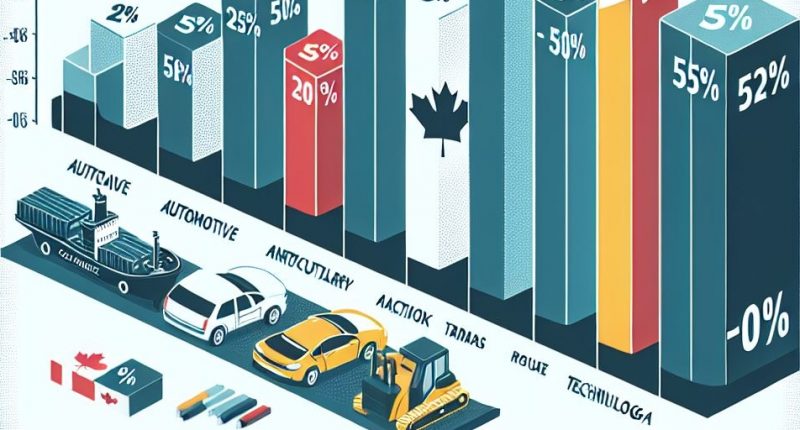- One of the most effective ways to protect your portfolio from tariff-related volatility is through diversification
- Precious metals, such as gold and silver, have historically performed well during times of economic uncertainty
- Investing in companies that operate primarily within Canada can reduce exposure to international risks
- Adopting a long-term investment strategy can help you navigate short-term market fluctuations
The recent tariff changes between Canada and the United States have created a wave of uncertainty in the financial markets. As trade tensions escalate, Canadian investors must adapt their portfolios to mitigate risks and capitalize on potential opportunities. Here are some strategies to consider:
1. Diversification
One of the most effective ways to protect your portfolio from tariff-related volatility is through diversification. By spreading investments across various sectors and asset classes, you can reduce the impact of adverse events on any single industry. This approach ensures that your portfolio remains resilient even when specific sectors face challenges due to tariff changes.
2. Investing in safe-haven assets
Precious metals, such as gold and silver, have historically performed well during times of economic uncertainty. Companies like Wheaton Precious Metals (TSX:WPM) offer exposure to these assets, providing a hedge against market volatility. Investing in safe-haven assets can help stabilize your portfolio when trade disruptions occur.
3. Focus on domestic companies
Investing in companies that operate primarily within Canada can reduce exposure to international risks. Businesses that are less reliant on cross-border trade are better positioned to weather tariff-related challenges. For example, Kinaxis (TSX:KXS), a supply chain management software company based in Ottawa, helps businesses adapt to trade disruptions, making it a strong candidate for your portfolio.
4. Sector-specific strategies
Certain sectors may be more resilient to tariff changes than others. For instance, the technology and renewable energy sectors often have growth opportunities that can offset trade-related risks. Identifying and investing in companies within these sectors can provide a buffer against tariff-induced volatility.
5. Monitoring economic indicators
Staying informed about economic indicators and market trends is crucial for making timely investment decisions. Regularly reviewing reports on trade policies, economic growth, and industry performance can help you anticipate changes and adjust your portfolio accordingly.
6. Long-Term investment approach
Adopting a long-term investment strategy can help you navigate short-term market fluctuations. By focusing on companies with strong fundamentals and growth potential, you can build a portfolio that withstands economic uncertainties. This approach allows you to benefit from market recoveries and long-term growth trends.
Spare change?
Adapting your portfolio in response to tariff changes requires a combination of diversification, strategic investments, and staying informed about market trends. By implementing these strategies, Canadian investors can “Hank Tough” and ensure their portfolios are well-positioned to endure the current market volatility. Deepening your due diligence and making informed decisions will help you navigate the rollercoaster ride of the stock markets and capitalize on opportunities presented by tariff changes.
The material provided in this article is for information only and should not be treated as investment advice. For full disclaimer information, please click here.
(Top image generated with AI.)





